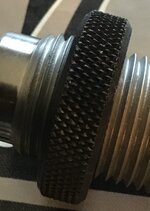coast range
WKR
So I have pulled the firing pin from my tikkas before and it’s pretty simple. But I am wanting to check brass sizing by checking the bolt drop. I have 100 adg bras 1x fired that I don’t want to over work.
So is it possible to easily strip these bolts down further to do this technique?
So is it possible to easily strip these bolts down further to do this technique?

